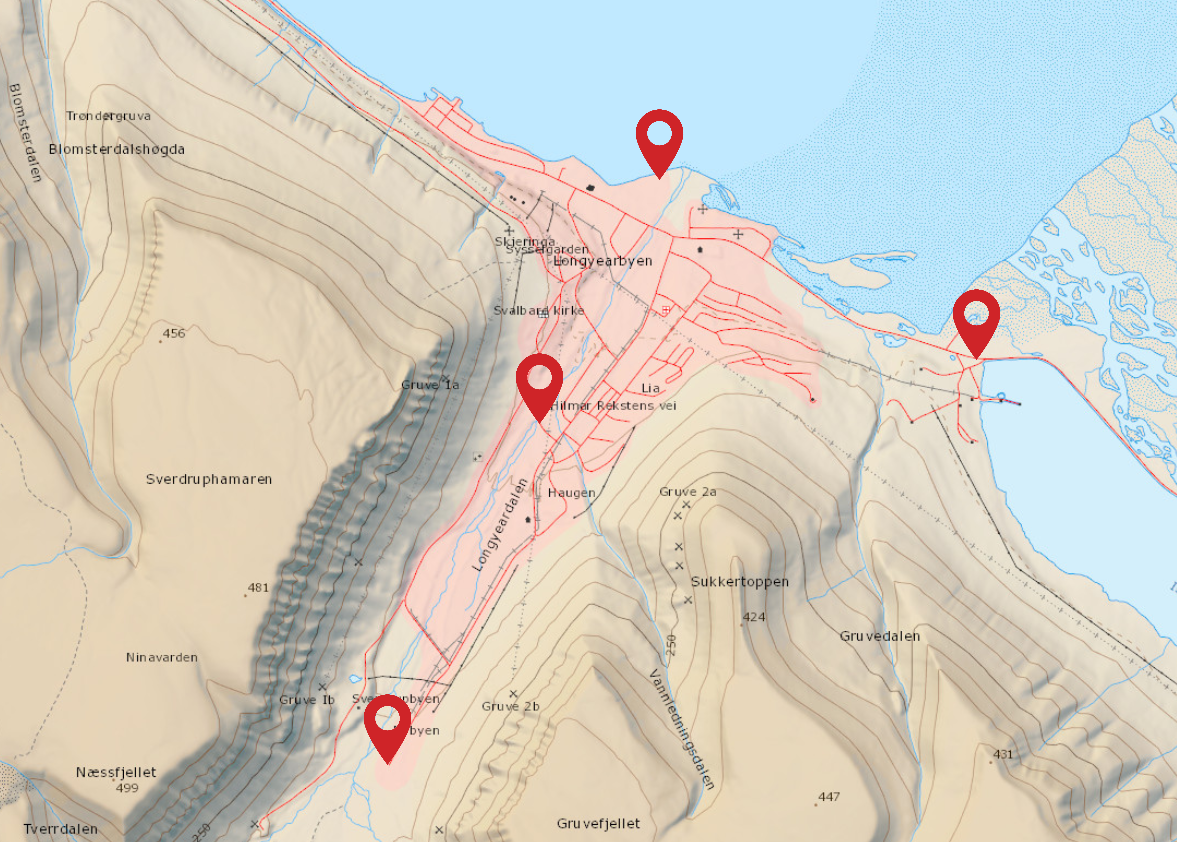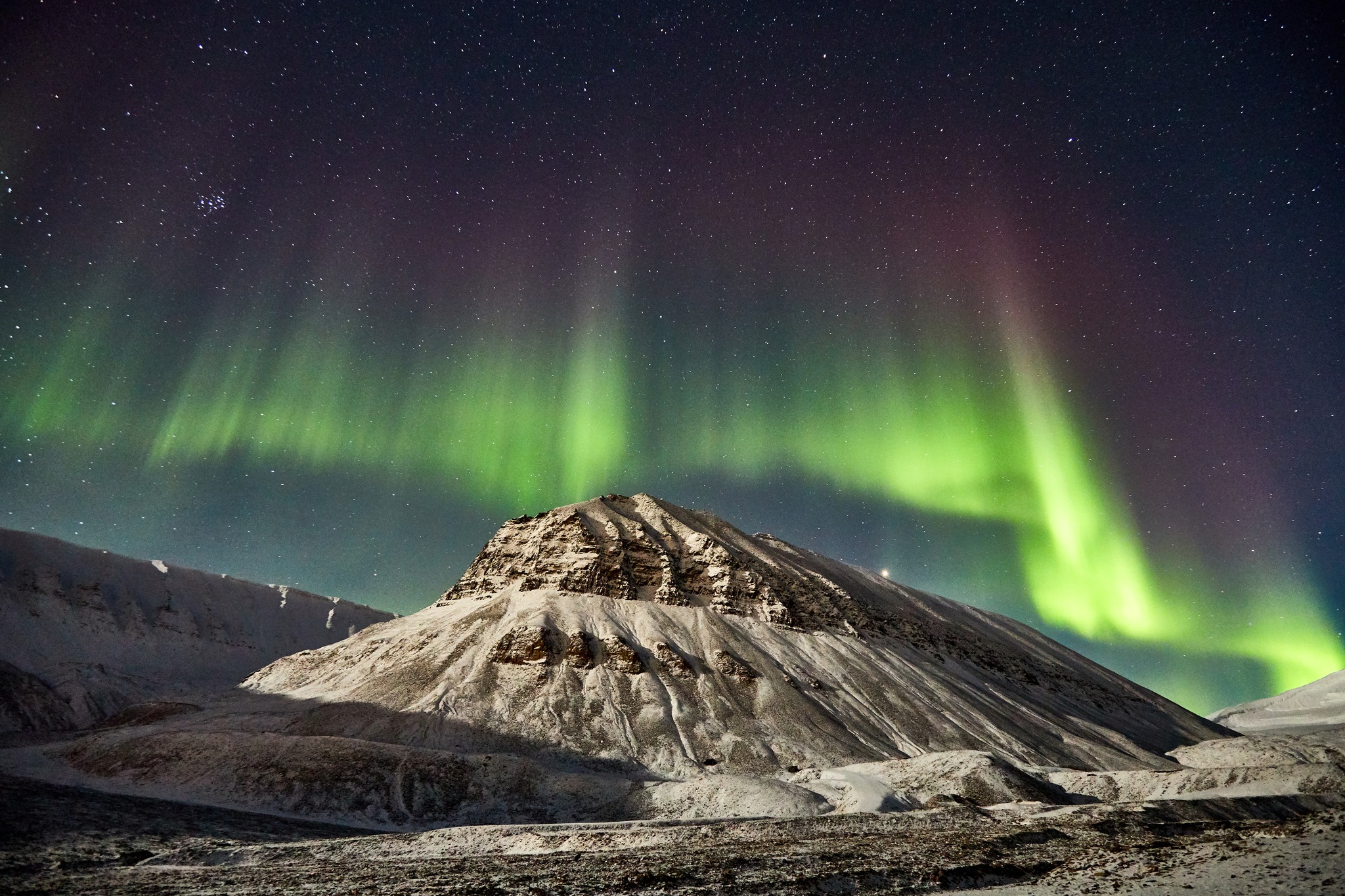In the vastness of the Arctic sky above the Svalbard archipelago, a fascinating natural spectacle is revealed that captivates mankind: The Northern Lights. This breathtaking natural phenomenon regularly attracts visitors to Svalbard.
Svalbard is only around 1,000 kilometers from the North Pole and offers good conditions for observing the Northern Lights. Although they are a little further south, for example in the region around Tromsø, they are usually stronger than here, but the long dark period offers the opportunity to see the northern lights during the day. Nevertheless, it takes a bit of luck, as a number of factors have to come together in order to see the Northern Lights.
To see Northern lights, you need darkness, a cloud free sly as well as Northern Light Activity. In Svalbard, it only gets dark enough between October and February, during the polar night when the sun does not rise. Im Dezember und Januar ist es rund um die Uhr dunkel, sodass man auch tagsüber die Chance hat, Nordlichter zu sehen, unsere sogenannten Tages-Nordlichter. Im Oktober und Februar wird es tagsüber zwar dämmerig (die Sonne geht nicht mehr bzw. immer noch nicht auf), doch abends und nachts wird es noch immer richtig dunkel, was natürlich für Nordlichter benötigt wird. Between March and September, the Northern Lights are not visible due to the midnight sun.
Of course, you not only need darkness to see the Northern Lights, but also a cloud-free sky. The weather on Svalbard can be very changeable and it is quite difficult to forecast the clouds. Nevertheless, it can be helpful to follow the current weather forecast to get an idea of the weather. Weather reports for Svalbard can only be relied on to a dubious extent, we recommend the Norwegian service YR:
Then, of course, you also need activity of the northern lights. In addition to light and heat, huge masses of matter are constantly ejected from the sun and hurled into space. These solar winds reach the Earth after around one to three days, which is protected from them by the Earth's magnetic field. The solar winds are deflected by the Earth's magnetic field and hit the atmosphere at the poles. This is where the energy exchange takes place, which causes the molecules to glow - and what we see as the aurora borealis. The solar winds can vary in strength, as can the northern lights that we can then see in the sky. Here you can find a forecast of Northern Lights activity from the Kjell Henriksen Oservatory, which researches the Northern Lights in Longyearbyen:
A lot of work is being put into researching the Northern Lights in Longyearbyen, and some data is publicly available. This includes a live camera, which is stationed just a few kilometers away from Longyearbyen in Adventdalen and records the entire sky. This camera gives a good indication of whether the Northern Lights are visible or not. But beware: the Northern Lights are much easier to see on this camera than they are with the naked eye. Nevertheless, it is worth having a look at this camera and if you can see greenish or reddish streaks, it may be worth going out.
You need a dark place to see northern lights. Longyearbyen is a small town, but even here there is light pollution, so not all areas are equally suitable for seeing the Northern Lights. We recommend going to the outskirts of the town to make sure it is as dark as possible. But please make sure you don't leave the polar bear zone and don't go further than the last house in town. We have marked a few spots on the map that are quite dark and suitable for observing the northern lights: The parking lot at Nybyen, the polar bear sign, the beach and the riverbed (watch out for snowmobile traffic!).

There are a number of tours in the dark that go in search of the Northern Lights. These basically offer the advantage that you are away from the lights of the town and therefore one step closer to observing the Northern Lights, but there is no guarantee of seeing the lights. As described, the other factors must also be right: There must be no clouds and there must be activity. On the tours, the guide tells stories about the Northern Lights and life in Longyearbyen, but booking a tour does not immediately increase the chance of seeing the Northern Lights. You can often see beautiful Northern Lights simply from the edge of town - but please make sure that you do not leave Longyearbyen's polar bear safe zone if you are on your own. You do not have to book a tour to see northern lights, but if you whish to we will be happy to advise you personally on which tours to go on in search of the Northern Lights.
We wish you good luck and success in your search for the Northern Lights!
